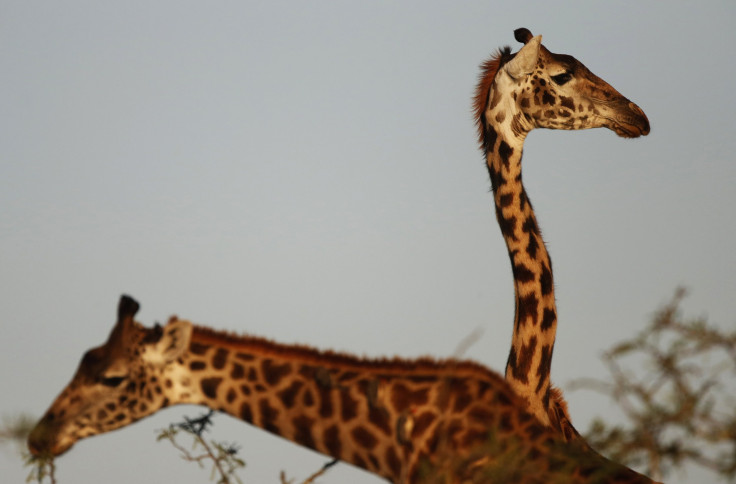African Giraffe ‘Silent’ Extinction: How Disappearance Of World’s Tallest Animal Went Largely Unnoticed

Africa’s giraffes are on a slow march toward extinction due to the pressures of poaching and habitat loss, conservation experts have warned. Illegal hunting and human population growth have reduced the overall African giraffe population by roughly 40 percent over the past 15 years, according to the latest data revealed this week by the Namibia-based Giraffe Conservation Foundation.
And until recently, hardly anyone had noticed. Unlike the plight of some of Africa’s other iconic wildlife, like the mountain gorilla and the rhino, the giraffe’s decline has happened largely off conservationists’ radar. “It’s a silent extinction,” Julian Fennessy, executive director of the conservation group, told ABC News. In some countries, only a few hundred giraffes remain. The group’s full report is expected to be published next year.
The wildlife group found that there were 140,000 giraffes in Africa in 1999. Today, there are fewer than 80,000, according to the foundation. In Niger, less than 300 West African giraffes – one of the continent’s nine subspecies of giraffe – have survived. Fewer than 700 Rothschild’s giraffes exist between Uganda and Kenya. Two giraffe species have already been added to the International Union for Conservation of Nature’s red list of endangered species. The new figures could push other subspecies onto the list.
“There are nine different races, and we’re probably going to lose some of them. It’s a terrible situation. They could become extinct,” Canadian giraffe expert Anne Dagg told The Times.
Wildlife experts blamed a variety of factors for the African giraffe’s decline, including hunting and habitat fragmentation caused by urbanization. Poachers have long targeted the world’s tallest animal for their flesh, as well as their skin, which is used to make several types of clothing, Discovery reported.
“In rural African communities, bush meat not only forms a large part of the diet but also provides an important source of income,” Zoe Muller, a researcher for the Rothschild Giraffe Project, wrote in a report published in 2010, according to ABC. Some countries believe consuming parts of the animal can actually cure HIV/AIDS. Other poachers collect the giraffe heads and bones that they can sell as trophies for up to $140 a piece, according to Muller.
How the giraffe’s decline went unnoticed has to do in part with the ubiquity of its image in popular culture. "Giraffes are everywhere,” David O’Connor, research coordinator with the San Diego Zoo’s Institute for Conservation Research, told Scientific American. “Look at kids’ books, which are full of giraffes. They’re always in zoo collections.” Conservation efforts to protect giraffes have often lagged those for other endangered African animals. The reason comes down to a lack of resources, according to experts.
“Giraffes are the forgotten megafauna,” O’Connor told Scientific American. “They’re really not getting the attention they deserve.”
© Copyright IBTimes 2024. All rights reserved.






















